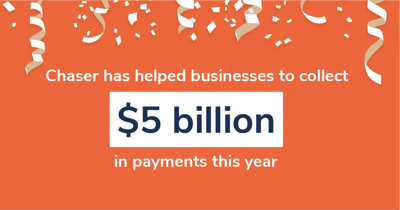Whether you're a business owner overseeing multiple transactions or a consumer keeping track of monthly expenses, understanding the mechanics of a billing cycle is crucial. A billing cycle is the interval between the last statement date and the next. This seemingly simple process plays a role in maintaining financial clarity and ensuring predictable cash flow.
It dictates when charges are billed and when payments are due, affecting cash flow and budgeting strategies. Understanding your billing cycle can lead to optimized spending habits and improved financial health.
As an individual, it allows you to plan purchases and manage subscriptions, ensuring that payments align with your personal cash flow. For businesses, mastering your billing cycles can enhance customer satisfaction by providing transparent billing practices. In this article, we will explore the concept of a billing cycle, highlighting its importance, the stakeholders involved, and tips for running an efficient billing cycle.
Introduction to the billing cycle
A billing cycle refers to the interval of time from the end of one billing statement date to the next. It is the period during which charges for services or goods are accumulated and subsequently billed to a customer. This cycle ends when the bill is issued, summarizing the charges incurred over that period.
Typically, most billing cycles span approximately one month, lasting from 20 to 45 days. This duration ensures that both the service provider and the customer can maintain a regular and predictable billing schedule.
However, a billing cycle's exact length and starting point can vary significantly across different industries and individual service providers. For instance, utility companies might align billing cycles with the calendar month, starting on the first day and ending on the last. In contrast, telecommunications firms might set the cycle based on the account activation date, with some choosing to synchronize all accounts to a common start date for simplicity.
Business models and customer needs also influence variations in billing cycles. For example, subscription-based services like streaming platforms may have fixed monthly billing cycles that begin on the subscription start date. In contrast, credit card companies might offer flexibility by allowing customers to choose their billing cycle's start date to align with their financial planning.
At the conclusion of each billing cycle, companies usually provide a grace period during which customers can settle their dues without incurring late fees. This period allows for financial flexibility and prevents service interruptions or penalties due to delayed payments. While most companies adhere to a monthly cycle, it's not uncommon to encounter different setups, such as quarterly or annual billing, especially in industries where long-term contracts are prevalent.
Stakeholders in a billing cycle
A billing cycle involves several key players, each playing a critical role in ensuring the process runs smoothly and efficiently. The key stakeholders include:
Service providers
Service providers are the businesses that supply services or products. This group includes utilities, telecom companies, subscription-based services, and financial institutions. Their primary role in the billing cycle is to generate accurate billing statements based on the customer’s usage or subscription details.
Service providers also set the duration of billing cycles and establish policies for payment deadlines and grace periods. They must maintain accurate and up-to-date billing systems to avoid discrepancies that could lead to disputes and customer dissatisfaction.
Customers
Customers are the recipients of the goods or services provided and are responsible for fulfilling the financial obligations specified in the billing cycle. Their main responsibilities include reviewing their bills for accuracy, addressing any discrepancies with the service provider, and making timely payments to avoid penalties or service disruptions. Customers must also update their account information to prevent billing errors and ensure they are charged correctly for the services or products they receive.
Payment Processors
Payment processors are third-party companies that facilitate financial transactions between the customer and the service provider. These can be banks, credit card companies, or specialized payment processing firms. These entities handle the authorization, processing, and transferring of payment data over secure networks.
Payment processors ensure that funds are correctly debited from a customer's account and credited to the service provider's account. They also deal with payment disputes and the secure handling of customer payment information.
Internal teams
The finance and accounting teams within a company are key stakeholders in the billing cycle. These teams manage the organization's overall revenue workflow by overseeing the accurate issuance of invoices and the timely collection of payments. They ensure that all financial transactions related to billing are recorded and reconciled accurately in the company’s books.
These teams are also responsible for compliance with financial regulations and for reporting financial status to management to guide business strategy and operational adjustments. The efficiency of the billing cycle heavily depends on the internal teams' ability to coordinate effectively, reconcile accounts promptly, and resolve billing issues as they arise.
Importance of a billing cycle
Let’s explore how a regular and transparent billing cycle can benefit various facets of business and customer engagement:
Cash flow management
For any business, cash flow is the lifeblood that sustains operations and facilitates growth. A regular billing cycle ensures that you receive timely payments from customers, thereby providing a steady stream of revenue. This regular cash inflow helps you manage day-to-day expenses and make strategic investments without unnecessary borrowing.
Customer satisfaction
Transparent billing processes enhance trust between you and your customers. When customers receive clear, consistent invoices that accurately reflect their usage or subscription, it minimizes confusion and disputes. A reliable billing cycle that includes detailed breakdowns of charges and timely notifications about due dates also builds customers' confidence in your services.
Financial Planning
Both businesses and customers benefit from a structured billing cycle when it comes to financial planning. For your business, knowing when money will likely enter your account allows for better budgeting and forecasting of future expenses. On the other hand, your customers appreciate predictable billing because it helps them manage their monthly budgets more effectively by setting expectations for when they will incur charges.
Compliance and reporting
Adhering to a consistent billing cycle is crucial for compliance with financial regulations. Consistent billing practices ensure that all your financial transactions are documented and traceable, making it easier to comply with accounting standards and tax requirements. This rigorous approach to billing cycles aids in accurate financial reporting, which is essential for auditing purposes and for providing stakeholders with a clear picture of your business’s financial health.
Tips for running an efficient billing cycle
Here are several practical tips to enhance the efficiency of your billing processes, ensuring they support rather than hinder your business growth:
Automation
Investing in billing software can transform your billing process by automating routine tasks, reducing manual errors, and saving time. Such tools often come with features that allow for the automatic generation and sending of invoices, tracking of payments, and notification of overdue accounts. Automation ensures that bills are consistent and sent out on time, improving the overall efficiency of your cash flow management.
Clear policies and communication
Establish clear billing policies and communicate them effectively to your customers. Ensure they are aware of payment terms, due dates, and any penalties for late payments. Clear communication prevents misunderstandings and sets clear expectations, which can reduce late payments and disputes.
Regular audits and reviews
Periodically review your billing processes to ensure they remain accurate and efficient. Regular audits help you identify any discrepancies or inefficiencies, allowing you to make the necessary adjustments. This practice ensures your billing operations adapt to changing business conditions and continue to meet both your needs and those of your customers.
Robust customer support
Ensure your support team is knowledgeable and equipped to resolve billing issues swiftly. Efficient customer service in handling these issues improves customer satisfaction and resolves payment delays. As a result, it becomes easier to maintain good customer relationships and ensure steady cash flow.
Integration with financial systems
Ensure your billing system integrates with other financial management systems, such as accounting software. This integration allows for real-time tracking of receivables and financial reporting, giving you a comprehensive view of your financial health. Accurate, integrated data is crucial for making informed financial decisions and can streamline everything from budgeting to compliance reporting.
Timely follow-up on unpaid bills
Develop a consistent policy for following up on unpaid bills. Automating this process can be particularly effective. Tools like Chaser allow you to set up personalized, automated payment reminders via SMS, Auto-calls and email.
You can also tailor follow-up schedules to individual customer payment behaviors, ensuring that you reach out at the most effective times and increasing the likelihood of receiving timely payments. This proactive approach minimizes the risk of unpaid invoices accumulating and affecting your business’s financial health.
Manage your billing cycle better with Chaser
Understanding and managing your billing cycle effectively is crucial for enhancing your financial stability and building trust with your customers. Adopting best practices such as automation, clear communication, regular audits, and robust customer support can streamline your billing processes, reduce errors, and improve cash flow management.
To further streamline this crucial process, consider adopting Chaser for your accounts receivable management. With Chaser, you can send personalized payment reminders, monitor overdue payments, and synchronize with your accounting system to ensure timely reconciliations. Book a demo or start a 10-day free trial and discover why numerous businesses trust Chaser to ensure they are paid on time.




